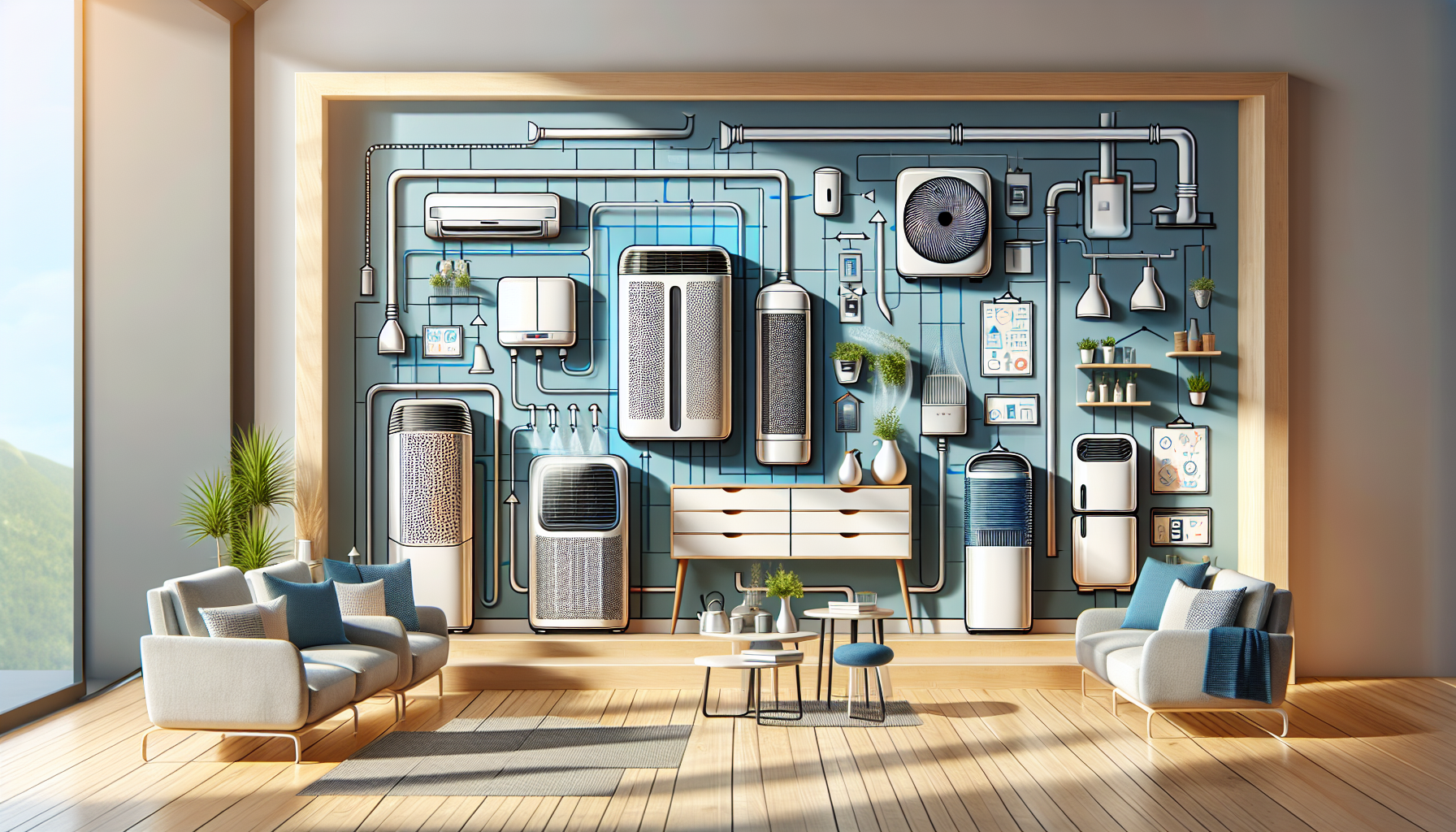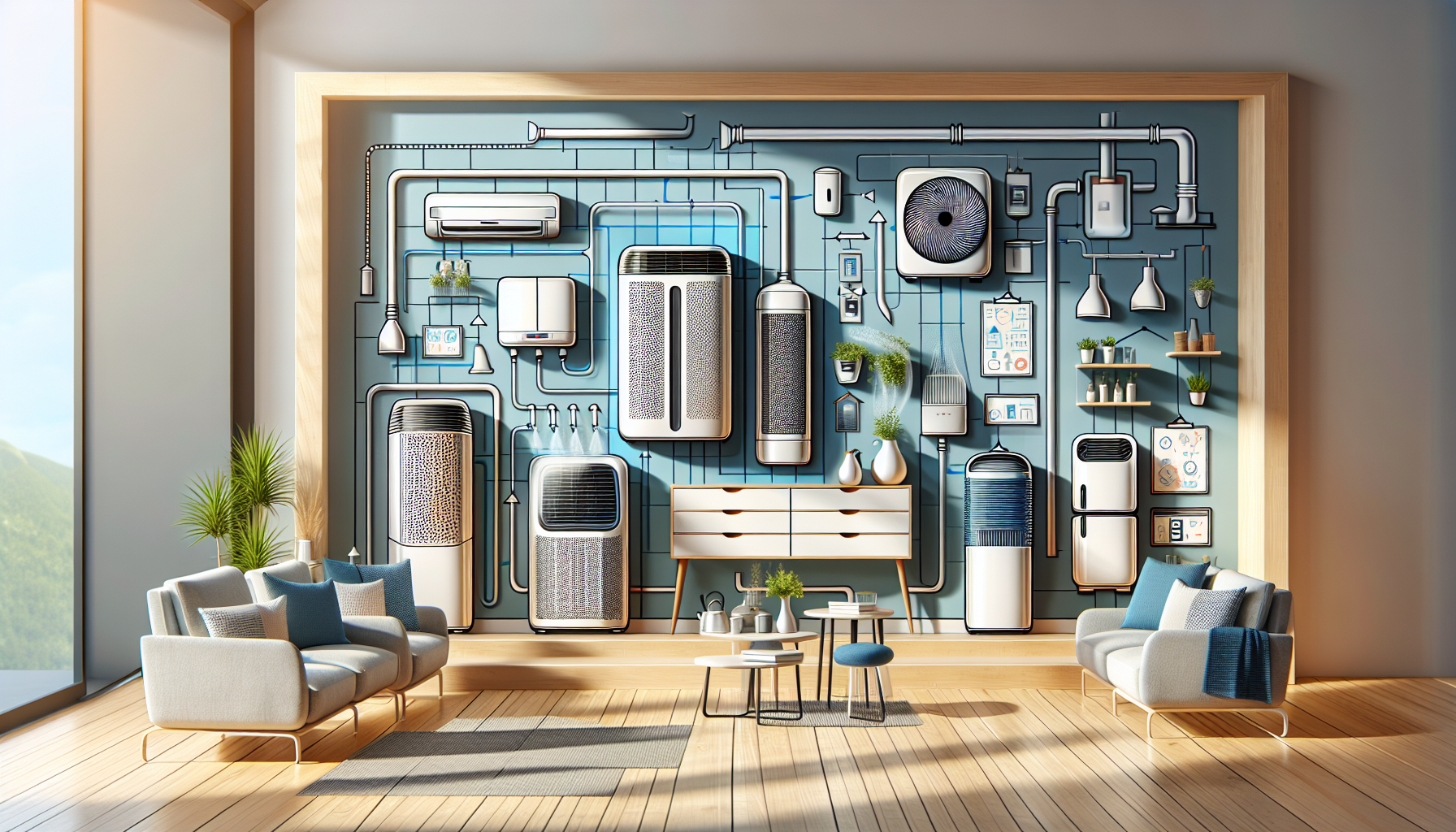Finding the ideal location for your indoor air purifier is crucial for maximizing its efficiency and ensuring a clean and healthy environment. With so many options available, it can be overwhelming to determine the best spot for this essential device. Whether you’re battling seasonal allergies or simply aiming to improve the air quality in your home, this article will guide you through the key factors to consider when deciding where to place your indoor air purifier.
Considerations When Choosing a Location
Room Size
When deciding where to place your indoor air purifier, one of the first things to consider is the room size. Different purifiers are designed to clean different room sizes, so it’s essential to choose a location that allows the purifier to effectively clean the air in that specific space. Be sure to check the manufacturer’s guidelines for the recommended room size for your purifier model.
Air Circulation
Good air circulation is crucial for the efficient operation of an air purifier. When selecting the location, opt for an area with adequate airflow. Placing the purifier near a window or a vent can help facilitate the intake and circulation of air. It’s also essential to avoid placing it in areas with stagnant air or poor ventilation, such as corners or enclosed spaces.
Proximity to Pollution Sources
Consider proximity to pollution sources when choosing the placement for your air purifier. If you have a specific area in your home that tends to have higher levels of pollutants, such as near a smoking area or close to a kitchen where cooking odors may linger, it’s a good idea to place the purifier in or near that location. This will help target and reduce the pollutants more effectively.
Noise Level
Air purifiers can vary in their noise levels, so it’s important to consider this when determining the placement. If you are sensitive to noise or plan to use the purifier in areas where a peaceful environment is desired, such as bedrooms or nurseries, opt for a location that is away from areas where you spend a lot of time or where you are trying to relax or sleep.
Visibility
While the aesthetic appeal of your air purifier may not be your top priority, it’s still important to consider its visibility. Choose a location that allows the purifier to be easily seen without obstructing important pathways or views. Placing it in a central area, such as the living room or home office, can serve as a reminder of its presence and encourage regular usage.
Power Outlet Availability
Finally, ensure that the chosen location has easy access to a power outlet. Air purifiers require electricity to operate, so it’s important to choose a spot that is within reach of an outlet. Consider the cord length and make sure it can comfortably reach the outlet without creating a tripping hazard or an unsightly mess of cords.
Ideal Locations for Indoor Air Purifiers
Living Room
The living room is often the central gathering space in a home, making it an ideal location for an air purifier. Placing the purifier in the living room ensures that the air is continually being cleansed in an area where family members and guests spend a significant amount of time. It also helps in reducing common pollutants like dust, pet dander, and pollen, creating a cleaner and fresher environment for everyone.
Bedroom
A good night’s sleep is essential for overall well-being, and air quality plays a vital role in achieving that. Therefore, placing an air purifier in the bedroom can greatly improve the air you breathe while you sleep. Not only does it help remove allergens and other airborne particles, but it can also provide white noise, which may help drown out disturbing sounds and create a more soothing sleep environment.
Kitchen
The kitchen is a hub of activity and can often be a source of cooking odors, smoke, and other particles. Placing an air purifier in the kitchen can help eliminate these odors and improve the overall air quality in a space that’s prone to cooking fumes. It’s especially important for those with allergies or sensitivities to consider placing a purifier in the kitchen to minimize the impact of airborne irritants while preparing meals.
Home Office
With an increasing number of people working from home, having clean and fresh air in the home office is more important than ever. Placing an air purifier in your home office can help reduce allergens, dust, and other particles that may be present, creating a healthier work environment and improving focus and productivity.
Nursery or Children’s Room
Babies and children are often more susceptible to airborne allergens and pollutants, making the placement of an air purifier in the nursery or children’s room highly beneficial. Having clean air in these spaces can help create a healthier environment for your little ones, reducing the risk of respiratory issues and allergies. It is important to choose a purifier that operates quietly to ensure that it doesn’t disturb their sleep or nap time.

Specific Recommendations for Placement
Keep a Minimum Distance from Walls
When positioning your air purifier, it’s recommended to keep a minimum distance of at least a foot from walls or large pieces of furniture. This allows for proper air intake and distribution, ensuring that the purifier can effectively clean the air within the room. By keeping a gap, you facilitate the circulation of air, allowing the unit to operate at its optimal efficiency.
Elevated Position
To maximize the effectiveness of your air purifier, try to place it in an elevated position. Placing it at a higher level, like on a table or shelf, allows the purified air to disperse more evenly throughout the room. It also prevents any obstructions that may obstruct the air intake or outlet vents, keeping the airflow unrestricted.
Avoid Obstructions
To ensure the smooth performance of your air purifier, it’s important to avoid placing it in areas with obstructions. Keep the unit away from furniture, curtains, or other objects that may obstruct the airflow. Obstructions can reduce the purifier’s efficiency and hinder the proper circulation of clean air within the room.
Avoid Placing Under Curtains or Drapes
While curtains and drapes can be aesthetically pleasing, it’s important to avoid placing your air purifier directly underneath them. This is because the fabric may impede the airflow and prevent the purifier from effectively capturing airborne particles. Position the purifier away from curtains or drapes to allow for proper air circulation and optimal performance.
Avoid Sunlight Exposure
Sunlight exposure can be harmful to air purifiers, as it can cause the plastic housing or filters to degrade or become discolored over time. To protect your purifier and extend its lifespan, avoid placing it in direct sunlight. Instead, choose a location that keeps it away from direct sunlight exposure, such as a shaded area or a corner that receives less intense sunlight.
Avoid Direct Airflow
While it may seem counterintuitive, avoid placing your air purifier directly in the path of an existing airflow, such as an air conditioning vent or a fan. Placing the purifier too close to these sources can disrupt its ability to efficiently filter the air. Instead, position it in an area where the purified air can circulate freely without interference from strong air currents.
Common Mistakes to Avoid
Placing in a Corner or Behind Furniture
One common mistake to avoid is placing your air purifier in a corner or behind furniture. These locations limit the airflow and prevent the purifier from effectively reaching and cleaning the entire room. Opt for a more central and open area to allow the purifier to work more efficiently and to provide better air quality throughout the entire space.
Blocking Air Circulation
Blocking the airflow around your air purifier can significantly hinder its performance. Be mindful of nearby objects such as furniture or décor that could obstruct the purifier’s intake or output vents. By keeping the surrounding area clear and unobstructed, you ensure that air can flow freely through the purifier, allowing it to clean the air more effectively.
Placing near Heat Sources
Avoid placing your air purifier near heat sources such as radiators, stoves, or space heaters. Exposing the purifier to high temperatures can potentially damage its internal components or affect its effectiveness. To maintain optimal performance and prevent any hazards, keep the unit away from direct sources of heat that could compromise its functionality.
Placing on Unstable Surfaces
To avoid accidental tipping or damage to your air purifier, be sure to place it on a stable and level surface. Unstable surfaces like wobbly tables or makeshift stands can pose a risk to both the air purifier and those around it. Choose a flat surface, such as a solid table or shelf, to ensure the purifier remains secure and prevents any accidents.
Using in Humid Areas without Proper Protection
Air purifiers are not designed to handle excessive moisture or humidity. It is important to avoid using them in areas with high humidity levels without proper protection. Moisture can damage internal components and promote the growth of mold or bacteria. If you need to use an air purifier in a humid area, consider using a dehumidifier alongside it to maintain both optimal humidity levels and the purifier’s performance.

Additional Considerations
Pets and Allergies
If you have pets or family members with allergies, it’s important to take their specific needs into account when placing your air purifier. Consider placing it in areas where pets spend the most time or near allergy-prone individuals to target pet dander and allergens effectively. Be sure to choose a purifier with a HEPA filter, as it is highly efficient at capturing pet hair and dander particles.
Chemical Sensitivities
For those with chemical sensitivities or concerns about volatile organic compounds (VOCs), placing the air purifier near potential sources of these compounds can be beneficial. Consider placing it in areas where you use cleaning products, near furniture or carpeting that may release VOCs, or in freshly painted rooms. Look for air purifiers with specialized filters designed to capture and reduce VOCs for maximum effectiveness.
Multiple Floors or Rooms
If you have a multi-level home or want to maintain clean air in various rooms, you may need multiple air purifiers. Consider placing purifiers strategically throughout your home to create a comprehensive clean air solution. By having purifiers on each floor or in different rooms, you can ensure that every area benefits from improved air quality.
Portable or Whole-House Systems
When selecting an air purifier, consider if you need a portable unit or a whole-house system. Portable air purifiers are ideal for smaller spaces or specific rooms, offering flexibility and targeted purification. Whole-house systems provide comprehensive purification throughout the entire home, utilizing the existing HVAC system. Choose the option that best suits your needs and budget.
Maintenance Accessibility
Maintenance is essential for keeping your air purifier operating at its best. When choosing a location, consider the ease of access for routine maintenance tasks such as cleaning or replacing filters. Placing the purifier in an easily accessible area ensures that you can regularly perform these maintenance tasks without any inconvenience or delays.
In conclusion, when deciding where to place your indoor air purifier, it’s important to consider several factors such as room size, air circulation, proximity to pollution sources, noise level, visibility, and power outlet availability. Each room in your home may have different requirements, and you should choose the location accordingly. Avoid common mistakes such as placing the purifier in corners, blocking air circulation, or exposing it to heat sources. Additionally, consider additional factors like pets and allergies, chemical sensitivities, multiple floors or rooms, portable or whole-house systems, and maintenance accessibility. By adhering to these considerations and recommendations, you can maximize the effectiveness of your air purifier and enjoy cleaner and healthier indoor air throughout your home.

